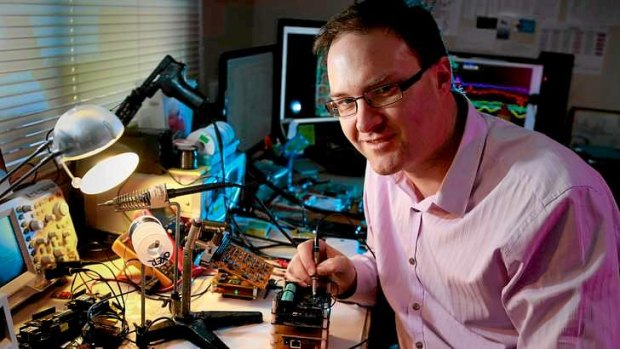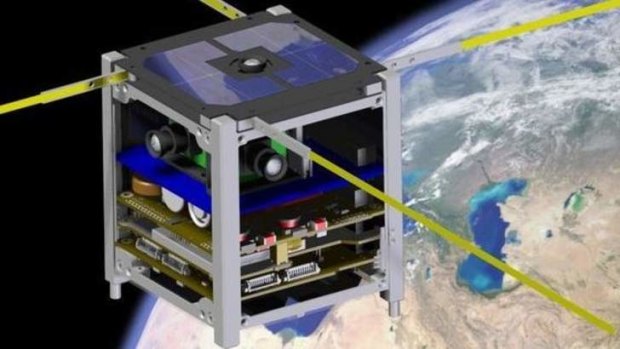This was published 10 years ago
To let: your own tiny piece of space, young Einsteins welcome
By Ben Grubb
It is an out-of-this world project that has the potential to give ordinary people access to satellite technology in space.
For the past 10 months, Jonathan Oxer has been involved in designing and building two crowd-funded micro-satellites that will allow anyone to conduct their own space experiments for $US250 ($271) a week.

Jonathan Oxer working on his micro satellite prototype.
Named ArduSat-1 and ArduSat-X, the low-cost, miniature satellites are aboard the International Space Station ready to be put into orbit between October and March 2014.
They are specifically designed for access by school students, engineers, hobbyists and anyone else with an interest in space technology.

An artist's impression of one of the ArduSat satellites in orbit.
The satellites were launched from the Japanese island Tanegashima aboard the HTV-4 cargo vessel and docked at the space station on August 8.
Once they are in orbit, people will be able to rent them to upload experiments via the internet and watch as the results unfold.
The satellites can do up to 16 experiments each at any one time, according to Mr Oxer, 43, who built the electronic parts at home.
Mr Oxer, a Victorian who came to prominence in 2006 for implanting a radio frequency identification chip in his arm to be able to open his front door on approach, hopes the satellites will inspire school students in particular to follow a career in engineering or science.
Weighing approximately one kilogram each, the 10-centimetre cube-shaped satellites are powered by solar panels and rechargeable batteries and make use of cameras, a spectrometer, ozone and CO2 sensors, a Geiger counter and temperature gauges. They also use a low-cost computer running Arduino, an open-source platform that allows for controlling the instruments aboard the satellite.
''There's been so much interest in them that they're basically booked solid,'' Mr Oxer said.
One proposed experiment is to measure sunspot activity and radiation levels to see if there is any correlation, Mr Oxer said. Another plans to listen for radio transmissions or radio stations that are over the horizon in order to detect meteors.
The US firm behind the project, NanoSatisfi, crowd-funded the devices using the Kickstarter website last year when it raised $106,330 in one month.
They are believed to be the first crowd-funded satellites to reach space and will soon be joined by several others, including the ARKYD, which Planetary Resources is behind - ''a space telescope for everyone'' - and the FUNcube, which both the Amateur Radio Satellite Foundation in the Netherlands and Britain are behind.